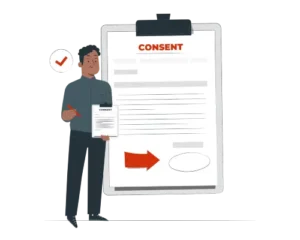The workplaces we know is evolving. And with it, HR and its functions are undergoing transformations to gear up for the new normal. The role of HR is evolving from transactional to strategic and is widely considered the linchpin of an organization’s success. As a result, there is a growing trend to free HR from repetitive, laborious, manual tasks to empower them for value-adding tasks. The good news is that much of the drudgery and toil can be automated with the help of RPA solutions. For instance, payroll services consume a sizeable chunk of HR time that could be spent doing business-critical tasks. Let’s see how intelligent automation is transforming the future of payroll:
Top ways in which RPA is changing the future of payroll
1. Improving productivity and efficiency
One of the biggest pitfalls of a highly repetitive and laborious process such as payroll is the scope of human errors. RPA follows a rule-based approach to delivering process efficiency. As long as the rules are accurately set up, there is no scope for delay, errors, or any other challenges. If the rules are updated regularly, then RPA- led payroll system achieves near perfect, 99.99% accuracy.
2. Uncovering insights
RPA solutions do more than just process the payroll. With the increased amount of data and intelligence, it is possible to analyze the trends and unlock useful insights that help optimize the workforce. Organizations can leverage this wealth of information and take a proactive approach to common payroll challenges.
3. Cost efficiency
To keep payroll costs low, many organizations outsource the function to a service. If the outsourcing company employs people to do the work, there are high chances of errors and inefficiencies, not to mention the security risks associated with sharing data.
Instead, organizations can use RPA systems for cost-effective payroll processing. This will improve the process efficiency and keep confidential information within the organization. Take, for instance, BAE Systems which used RPA for automating many of their HR processes, resulting in an increase in payroll data uploads by a staggering 700%.
4. Compliance
Regulatory compliance is a critical component of an effective payroll process. Businesses that operate in many jurisdictions in a country or those that work across geographies need to keep up with the regulatory updates that impact payroll. This is a complex undertaking to be done manually. Since an RPA solution is rule-based, the rules can be altered quite easily at any time. This makes it easier for HR leaders to manage compliance within a dynamic regulatory landscape.
5. Centralized resource management
Implementation of RPA in payroll globally creates a centralized, standardized, and completely automated payroll solution. This also presents an opportunity to collect and analyze company-wide information in a standardized format. There are other spin-off benefits such as retiring legacy systems, improving productivity, eliminating data silos, and conducting an in-depth evaluation of workforce demographics.
6. Integrating legacy system
RPA implementation has a vast potential with its ability to cleanse data to ensure compatibility and consistency across multiple databases. For example, RPA can create documents that employees need instead of HR having to bridge the gaps between legacy systems and ERP to align the data across varying templates.
According to a Deloitte survey, RPA not only meets but exceeds expectations across multiple dimensions that include improved compliance (92%), improved accuracy or quality (90%), enhanced productivity (86%), and cost reduction (59%).
Some typical payroll RPA use cases
While RPA can be leveraged to automate the payroll process from end to end, many companies choose to start with some of the most challenging or repetitive tasks to launch their RPA efforts.
1. Validating time records
RPA bots can check for missing time entries for employees to reconcile the hours worked against the stipulated hours. The relevant managers are then notified of the gaps to be resolved immediately so that the discrepancies can be resolved immediately by the employees.
2. Initiating earning and deduction batches
RPA bots load batch creation and import data into the payroll system during downtime, enabling payroll teams to start their day with import data loaded. RPA can be used to carry out standard validations within a span of minutes as opposed to hours.
3. Post-close administration
Jobs that are performed towards the quarter-end such as quarterly reviews, tax reconciliations are ideal candidates for automation. Other use cases include auto-reconciliation of data against benefit invoices.
Considerations before transitioning to RPA-based payroll
- RPA must be implemented in payroll as part of a department or organization-wide initiative. Successful implementation needs an enterprise-wide standard process.
- RPA is not a shortcut to reducing payroll team headcount. It requires the support and alignment of payroll team members to design, deploy, stabilize, and improve payroll processes.
- It is most impactful when RPA services are leveraged as a digital transformation enabler as opposed to cost-cutting or resource automation endeavors.
Conclusion
RPA is transforming many HR processes including payroll. With its improved accuracy, streamlined data collection, and automatic validation, it eliminates much of the time-consuming and laborious payroll tasks. Leveraging robotics streamlines overall HR operations and helps in driving up efficiency and employee satisfaction.




